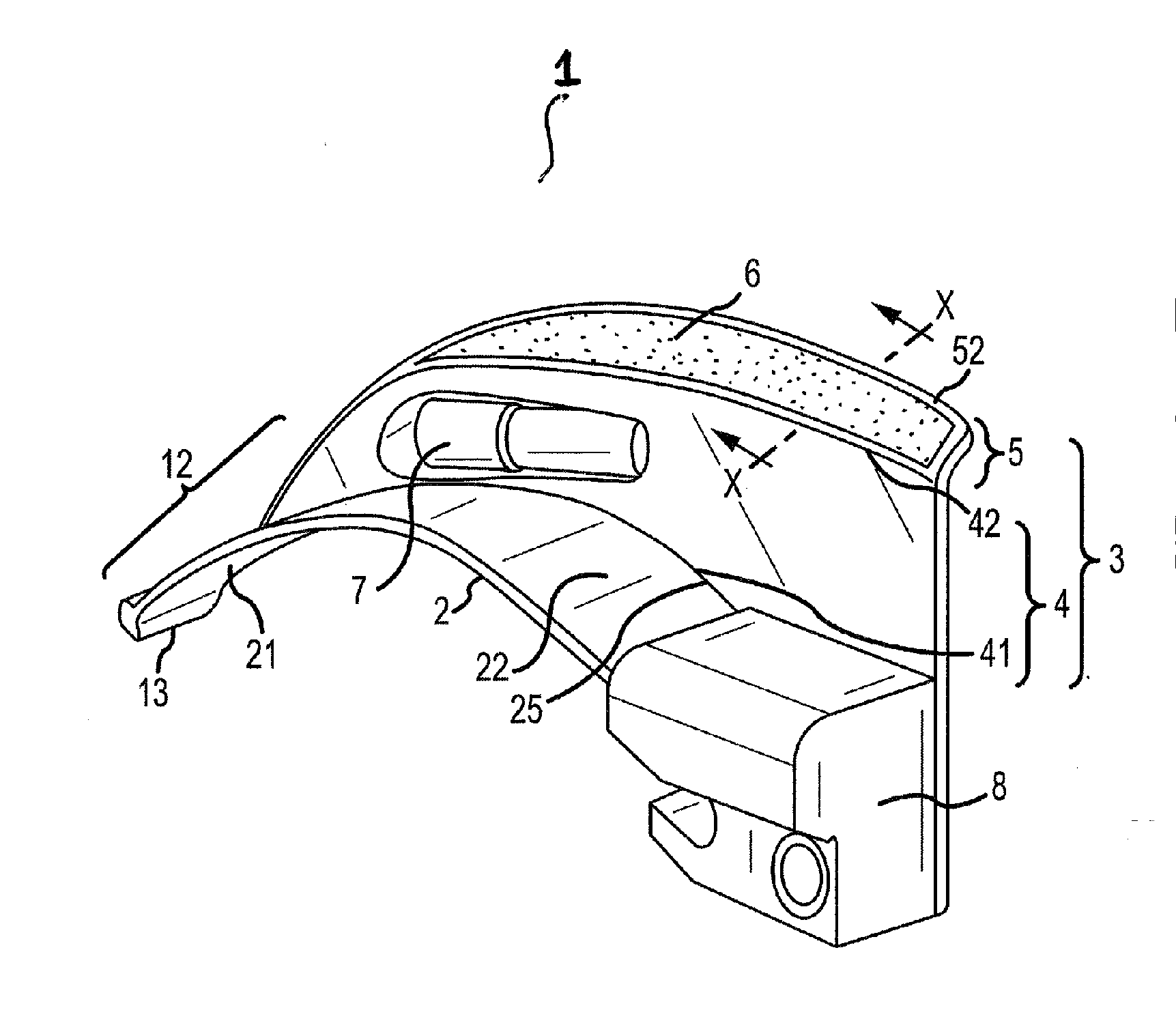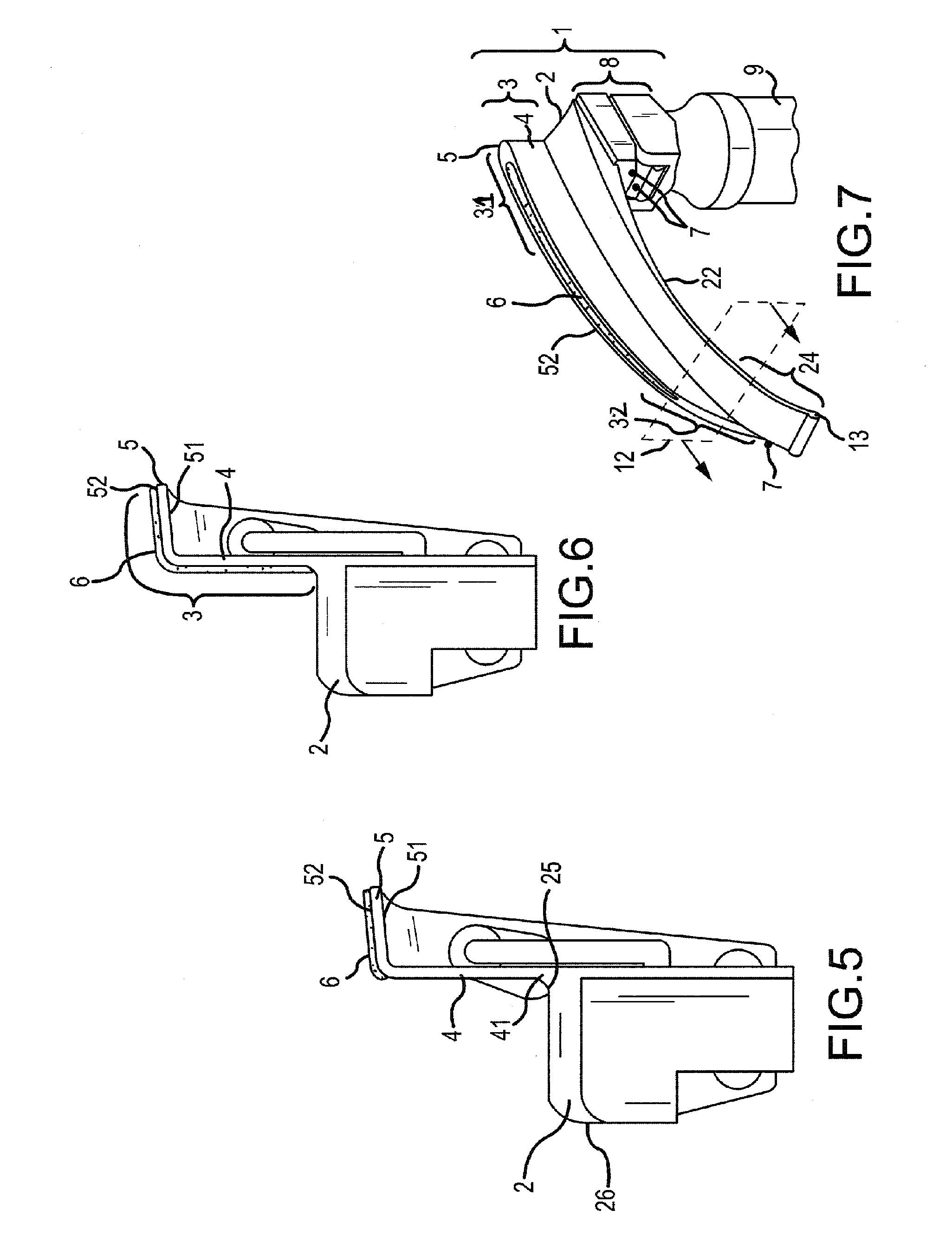Laryngoscope blade
a technology of laryngoscope and blade, which is applied in the field of laryngoscope blade, can solve the problems of substantial maxillary and mandibular injury, patient may suffer dental damage, chipped and broken teeth or dentures, etc., and achieve the effect of reducing or eliminating the risk of dental, maxillary or mandibular injury to the patient and saving the user significant time and effor
- Summary
- Abstract
- Description
- Claims
- Application Information
AI Technical Summary
Benefits of technology
Problems solved by technology
Method used
Image
Examples
Embodiment Construction
[0028]The invention is described in more detail hereinafter with reference to exemplary embodiments. In the figures, the same reference numerals are used for similar components in different embodiments. It is understood that the invention is not limited in its application to the details of construction and the arrangement of components set forth in the following description or illustrated in the following drawings. The invention is capable of other embodiments and of being practiced or of being carried out in various ways. Also, it is understood that the phraseology and terminology used herein is for the purpose of description and should not be regarded as limiting.
[0029]Referring to FIG. 1, according to one exemplary embodiment of the present application, a side bottom view shows a laryngoscope blade assembly 1 comprising a blade body 2 comprising an upper face 21 and a lower face 22, a proximal end 23 and a distal end 24, the upper face 21 and lower face 22 defined by a first edge...
PUM
 Login to View More
Login to View More Abstract
Description
Claims
Application Information
 Login to View More
Login to View More - R&D
- Intellectual Property
- Life Sciences
- Materials
- Tech Scout
- Unparalleled Data Quality
- Higher Quality Content
- 60% Fewer Hallucinations
Browse by: Latest US Patents, China's latest patents, Technical Efficacy Thesaurus, Application Domain, Technology Topic, Popular Technical Reports.
© 2025 PatSnap. All rights reserved.Legal|Privacy policy|Modern Slavery Act Transparency Statement|Sitemap|About US| Contact US: help@patsnap.com



